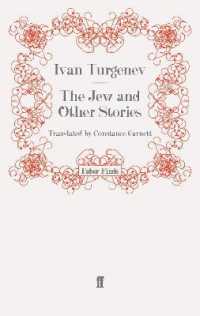Full Description
The Evolution of Taste in American Collecting is a new critical translation of René Brimo's classic study of eighteenth- and nineteenth-century patronage and art collecting in the United States. Originally published in French in 1938, Brimo's foundational text is a detailed examination of collecting in America from colonial times to the end of World War I, when American collectors came to dominate the European art market. This work helped shape the then-fledgling field of American art history by explaining larger cultural transformations as manifested in the collecting habits of American elites. It remains the most substantive account of the history of collecting in the United States.
In his introduction, Kenneth Haltman provides a biographical study of the author and his social and intellectual milieu in France and the United States. He also explores how Brimo's work formed a turning point and initiated a new area of academic study: the history of art collecting.
Making accessible a text that has until now only been available in French, Haltman's elegant translation of The Evolution of Taste in American Collecting sheds new critical light on the essential work of this extraordinary but overlooked scholar.
Contents
Contents
List of Illustrations vii
Acknowledgments ix
Making Sense of an Unusual Contribution to Art History 1
Notes 67
Kenneth Haltman
The Evolution of Taste in American Collecting 85
René Brimo
Preface 87
Introduction 89
Book 1:
Early Developments: From the Colonial Period to the
Philadelphia Centennial
Part 1: Colonial America
Looking Backward 96
Part 2: Science or Sentiment
[Historical Introduction, 1776-1840] 107
1 Encyclopedic Spirit 111
2 The Search for a National Style 121
Part 3: The Critical Era
[Historical Introduction, 1840-1876] 131
1 TheTaste for Anecdote and Realism 135
2 The Discovery of History 151
Book 2:
The Triumph of Quality: Major Collections from the Philadelphia Centennial to the Great War
[Historical Introduction, 1876-1919] 166
1 Eclecticism 171
2 The Notion of the "Old Master" 195
3 The Vogue for Archaeology and "Pre-History" 226
4 Staying in Touch with the Contemporary Scene 255
5 The Modern Art Museum 272
Conclusion 294
Notes 301
Bibliography 344
Index








